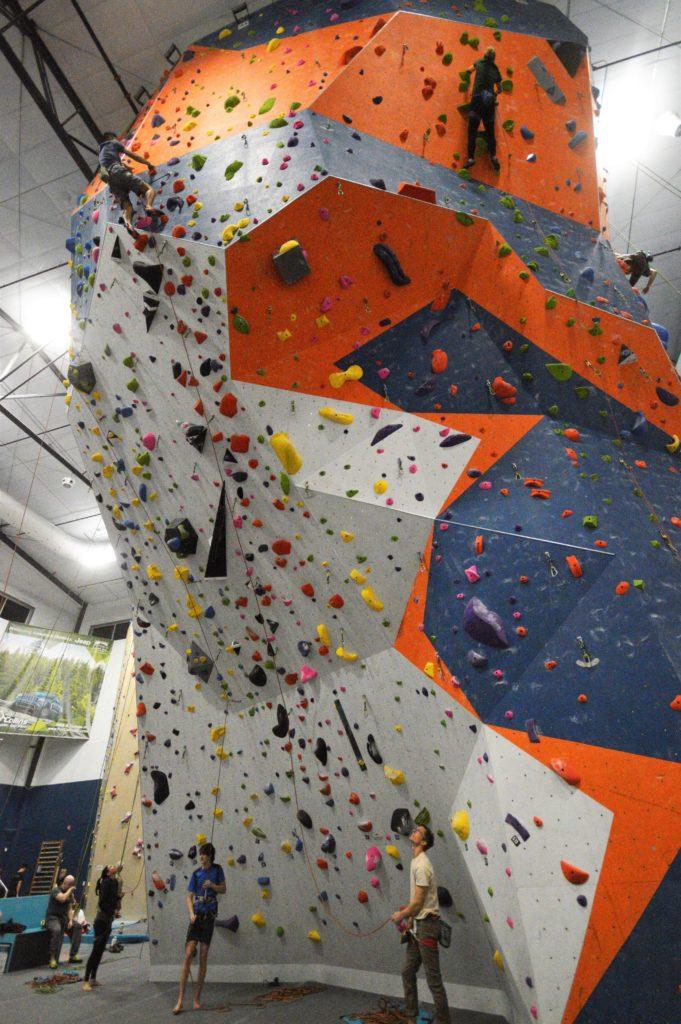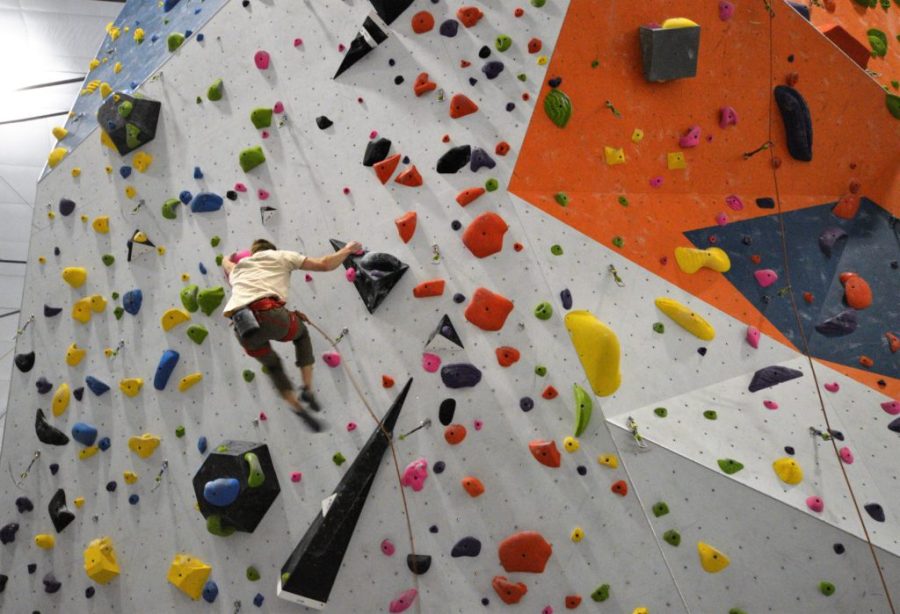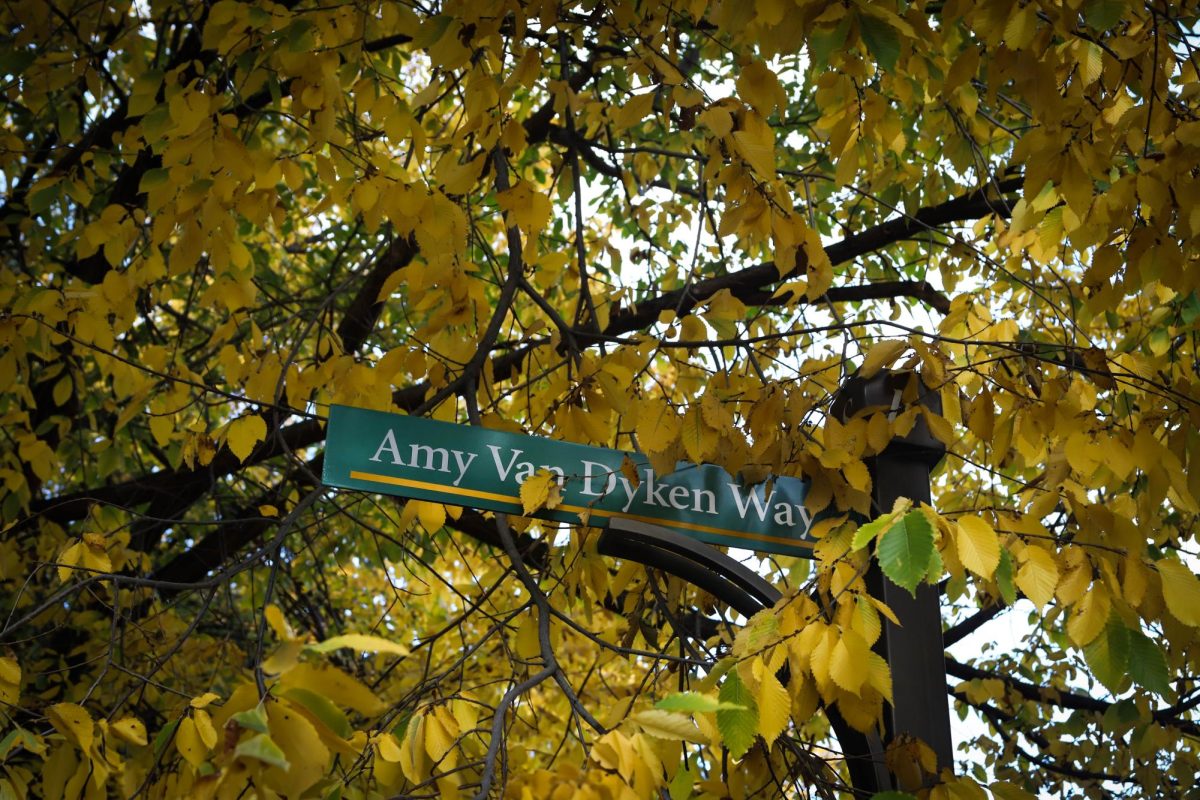The team begins each meeting in the children’s climbing room at their practice site, the Ascent climbing studio. About three dozen college students sit in front of a miniature climbing wall as everyone listens to the leadership team describe the activity of the day.
Energy is high despite the meeting starting in the late evening at eight. Rather than passively half-focusing, climbers shout out questions to fully understand what the expectations of the day are. After one question leads to another which then accidentally causes greater general confusion, several leaders scramble for an Expo marker to hastily draw up a chart to illustrate the activity.

The brief but slightly-chaotic episode reveals the climbers’ commitment to the team. Loyalty to the leadership team’s plans and activities is what distinguishes the group as a unified team, not just a collection of climbers tackling the walls on their own agenda and interest.
“We’re one of the first [college] teams to really start doing team workouts,” Peter Candell says. Candell is a computer science major and the vice president of the CSU Climbing Team. He credits their success to both their frequent meetings throughout the week and the teamwide activities.
The workouts address two different techniques: bouldering and sport climbing. Bouldering takes place on shorter walls without any ropes and requires some of the more complex holds. Sport climbing is more endurance-based and takes place on ten-meter walls. Depending on the incline of the wall, the climber may use a rope already clipped at the ceiling or attach clips to the wall as they climb.
Once the activity is thoroughly ironed out, the climbers disperse and get to work. Each member finds a niche on the wall that will be the first trek of many for the next two hours.
Despite how social and bubbly everyone was in the kid’s room, the volume of the climbing gym is moderate. Friends talk amongst themselves in huddles. But the majority of climbers work quietly on their own, halfway up the wall. By nature, climbing is a solitary sport. The pairs of climbers and belayers — a partner who holds the climber’s rope to maintain rope pressure — may shout encouragement or directions to each other, but with the distance, it’s difficult to talk for long periods of time.
For the most part, it is just the climber going solo.
“It’s more of a ‘self-push sport,’” says climber and business major Thomas Reitwiesner. “There’s a bit of a laid back environment that really just allows people to do what they need to do.”

With so much freedom, self-discipline is a valuable skill all climbers build.
“You gotta put in that effort yourself if you want to see results,” Reitwiesner adds.
Pushing yourself means a variety of things for climbers. It doesn’t simply mean building strength and training. It means mental strength: ambition, quick-thinking, the ability to focus and manage stress.
“It can be a very mental sport,” Candell says. “You’re using your brain to keep yourself calm on the wall while you’re climbing and not get psyched out about falling. But also, you’re doing a lot of puzzle-solving.”
Physical instinct and muscle memory are limited by what’s known and familiar. In order to grow and try new things, climbers make calculated decisions on what moves may work and get them higher up the wall.
“You have to ask yourself ‘Okay, here are the holes I have, how do I position my body to hold those in the most efficient and effective way to be able to get up the wall?’” Candell says.

The skills to keep yourself calm and focused become especially important to maintain during competitions. Undeclared freshman Ellery Osborne thinks part of maintaining a good mindset is being understanding with yourself.
“You definitely learn how to control the voice in your head,” Osborne says. “You have to accept the fact that you have a bad day, and it sucks if that day falls on competition, but you just have to deal with that.”
According to a few members of the team, last year was the bad day in the team’s history.
“Last year was not bad,” Reitwiesner says. “But every year prior to that, we had three or four years where we won lots of titles.”
But the team is optimistic about their chances in 2020.
“We have a lot of good stuff coming in,” Reitwiesner says. “We’re in a good position.”
And just like maintaining a calm and clear head while climbing, the climbers stay humble amongst success.
Osborne reflects that one important thing to learn while was how to keep herself ambitious without wishing for others to fail.
“Because I don’t want to be negative and wish for other people to fail , I would say to myself ‘I hope that everybody else has their best day, but I just want my day, my best day, to be better than their best,’” Osborne said.




































